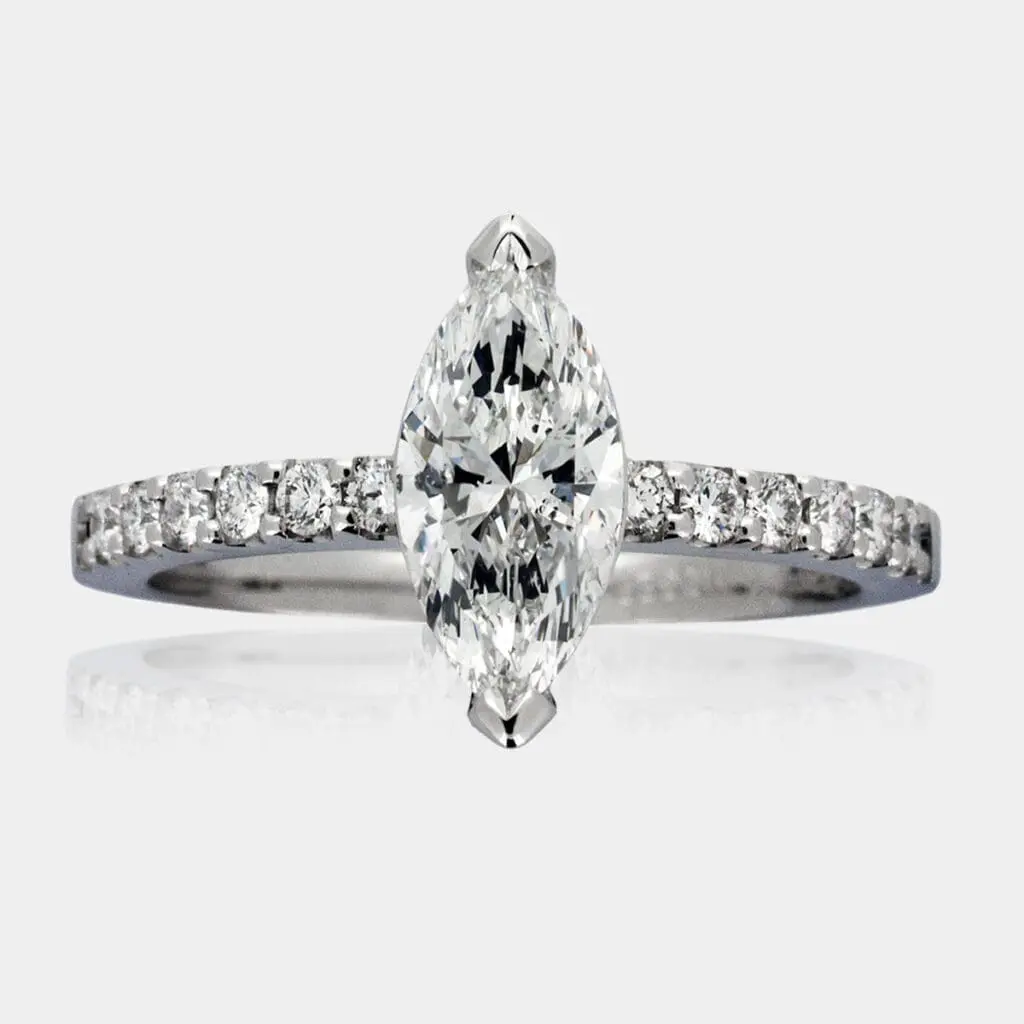The Essential Guide to Rhodium Plating Jewellery
Rhodium plating plays a crucial role in the jewellery industry. This technique uses electrolysis to coat metal with a bright, white layer. Jewellers widely use this process to enhance the appearance of white gold, silver, and even low-grade metals, giving them a more desirable, whiter finish.
Why Rhodium Is Popular in Jewellery
Jewellers value rhodium for its brilliant, reflective white finish, making it a popular choice for improving the look of various metals. For example, many jewellers apply it to white gold to achieve a more vibrant, white appearance. This is particularly important for white gold that contains nickel, which often has a slightly yellowish tint. Although this grade of white gold is cheaper, it doesn’t look as appealing without a rhodium coating. However, when the coating wears off, the yellowish colour of the base gold starts to show.
At DDS Diamond Design Studios, we avoid this issue by using 18ct white gold, which is high in palladium and free of nickel. Our choice ensures that our white gold has a naturally bright appearance. So, when the Rhodium plating eventually wears off, the contrast between the plated surface and the underlying metal remains minimal, allowing our clients’ rings to maintain their beauty over time.
How Often Should You Replate?
Your decision on how often to replate your jewellery depends largely on personal preference. Over time, the coating will wear off, especially with regular use. At DDS, we recommend that clients service their rings once a year. This service includes polishing, adding a fresh rhodium layer, and checking all stones to ensure they are securely set. Regular maintenance keeps your ring looking its best and extends its lifespan.
Rhodium plating as a Protective Layer
Jewellers also use this material to protect metals like silver, which can tarnish and turn black over time due to exposure to the environment and skin acids. A rhodium coating significantly slows down the oxidation process. However, if tarnishing occurs beneath the rhodium layer, black blotches can appear on the surface. In this case, you should bring the piece back to the jeweller for polishing and replating. Remember, tarnishing is a natural characteristic of silver, not a fault of the jeweller.
Rhodium Coating During Repairs
When you need to resize or repair a gold ring, the heat used in the process will affect the rhodium plating. The layer burns during heating, so jewellers must polish off the remaining coating before performing repairs. After completing the repairs, the jeweller will reapply the rhodium to restore the original shine.
Can You Plate Yellow Gold?
Many people wonder if they can plate yellow gold to achieve a white appearance. While this technique can make yellow gold look white, the effect works better on items like pendants that don’t experience much wear. On rings, however, the plating tends to wear off quickly, revealing the yellow gold beneath. This contrast can be unappealing and may not be worth the effort.
Exploring Other Rhodium Colours
You can also find rhodium in other colours, such as black rhodium, which can create a unique look. However, keep in mind that these are surface coatings, just like white rhodium, and they will wear off with regular use. While coloured rhodium can add an interesting dimension to jewellery, it requires the same maintenance and care as its white counterpart.
In summary, rhodium plating is a valuable technique for enhancing and protecting jewellery. Whether you want to maintain the bright whiteness of your white gold ring or protect your silver jewellery from tarnishing, regular replating can keep your pieces looking their best. At DDS Diamond Design Studios, we offer expert services to ensure your jewellery remains stunning and well-maintained.
If you have any questions or need to schedule a service, please call us at 08 8332 0707. We’re here to help you keep your jewellery looking as beautiful as the day you first wore it.






